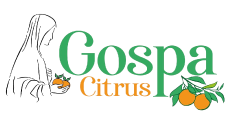Plant native to tropical and subtropical areas of America, it belongs to the cacti family. It has an ovoid shape, a striking colour and is covered with a scale-like appearance. This was what gave rise to its name in Hatian. The pitahaya attracts for its exoticism and convinces with its refreshing flavour, without forgetting its healthy properties. It has a variable weight between 200 and 400 grams. There are four general varieties: red white-fleshed, red red-fleshed, red purple-fleshed and yellow white-fleshed pitahaya. It is rich in water and fiber and has a low caloric content. It stands out above all for being a great source of antioxidant vitamins and essential minerals.
In Europe, the southern region of Spain (Andalusia) is one of the main places where it is grown and exported.
Dragon fruits come in a variety of shapes and colors:
Pink skin with white flesh
Pink skin with red or pink flesh
Pink skin with purple flesh
Yellow skin with white flesh
The benefits of eating dragon fruit
The flesh of the dragon fruit is low in calories and fat-free. It also contains plenty of:
FIBER
Dragon fruit is an excellent source of fiber. The daily recommendation for adults is at least 25 grams — and dragon fruit packs 7 grams in a single 1-cup serving.
NUTRIENTS
Dragon fruit has a ton of beneficial vitamins and minerals, including:
Carotenoids (may reduce cancer risk).
Lycopene (may improve heart health and reduce cancer risk).
Magnesium (important for cell function, and dragon fruit provides 18% of the recommended daily amount).
Iron (important for healthy blood and energy, and dragon fruit contains 8% of the recommended daily intake).
Vitamin C (helps your body absorb the iron and boosts immune system health).
IMPROVES GUT HEALTH
Healthy bacteria in your gut may help digestion and even reduce colon cancer risk.
More information:
Gospa Citrus, Seville, Spain
La entrada All about Dragon Fruit aparece primero en Seville Oranges.

